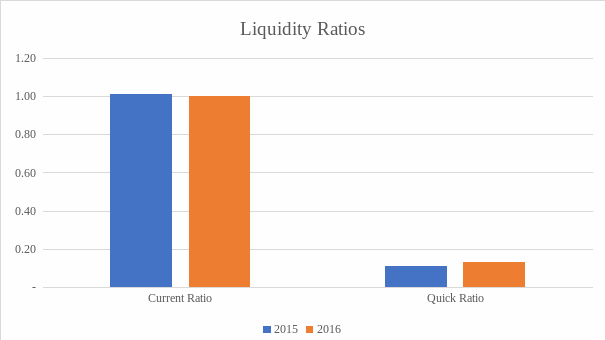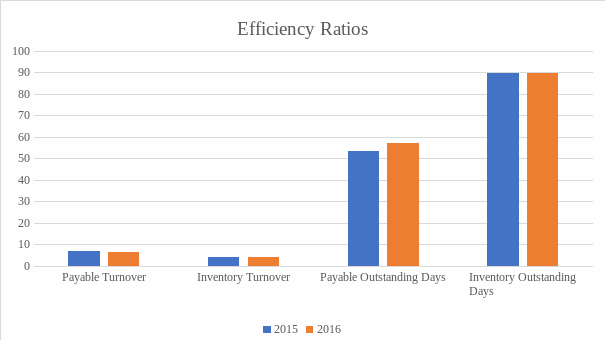Introduction
Lowe’s Companies, Inc. (Lowe’s) is a leading retail company specializing in home improvement and hardware products and services. It is a US-based company, and its stocks are listed on Fortune 50, NYSE (“Lowe’s Company Information,” 2017). The company’s last financial reporting period ended on February 3, 2017, and its annual report includes consolidated balance sheets for the last two years. In this research paper, the company’s consolidated balance sheets are analyzed to perform the trend analysis including horizontal and vertical analysis and also, the financial ratio analysis to evaluate its financial performance in the last two years. Furthermore, the paper discusses accounting policies and treatment methods adopted by the company for recording and reporting of its assets, liabilities, and equity.
Trend Analysis
The trend analysis provided in this section determines the yearly change (horizontal analysis) and proportion of each financial element (vertical analysis) included in the values of the company’s assets, liabilities, and equity.
Table 1: Common Size Balance Sheets.
Table 1 indicates that the major proportion of Lowe’s current assets was held as merchandise inventory. Although the company’s business requires it to have a large volume of inventory in its stores, it has certain drawbacks including inventory loss due to product damage, obsolete products, and change in price, etc. Therefore, the company faces risks of loss in the value of inventory that could affect its liquidity position.
Moreover, it could be noted that the company mainly owns and operates its stores. Furthermore, it is indicated that the company recorded a significant increase in the book value of goodwill that was associated with its acquisition of Orchard Supply Hardware. The horizontal analysis shows that the value of all assets except short-term investments and deferred income taxes increased in 2016. The analysis indicates that the company owed a significant amount to its suppliers and finance providers.
It could be stated that the company financed the acquisition of Orchard Supply Hardware and stores expansion through external borrowing both short-term and long-term. The company’s decision to borrow additional amounts rather than financing investments through equity could be due to the low-interest cost. One concern that could be raised is that despite increased borrowing in 2016, the company’s retained earnings decreased by almost 18%. It could imply that the company’s operating costs were high in the last year or it was not able to increase its profit margin.
Financial Ratio Analysis
The financial ratio analysis provided in the following includes results of different ratios including liquidity, efficiency, and solvency that are related to the analysis of Lowe’s balance sheets.
Table 2: Liquidity Ratios.
Table 2 indicates that the current ratio value was 1 in both years. However, the value of the quick ratio was very low, which was due to high inventory low. It implies that the company had a weak liquidity position, but it reflected the common trend in the retailing industry. The company could experience a major turnaround in its financial position if the economic conditions change in its main market. The annual report indicates that the company clearly understood the issue of slow-moving inventory. Therefore, it is suggested that the company should rework its suppliers’ contracts for their payments to avoid any financial crunch.

Table 3: Efficiency Ratios.
Table 3 indicates that Lowe’s did not have any accounts receivable in both years. It means that the company settled all its customer accounts and received cash for all credit sales before the year-end. Although the value of payables turnover decreased in 2016, the company managed to keep the value of inventory turnover constant in the last two years. However, it could be noted that the company held inventory for almost 90 days, but settled its accounts payable in 57 days. The delay could create financial difficulties for the company. If the company does not manage its inventory effectively, then the company can have cash flow problems related to its operations (Goel, 2015).

Table 4: Solvency Ratios.
Table 4 indicates that the company had a weak solvency position in the last two years. Moreover, it deteriorated in 2016 because of high borrowing. The analysis also indicates that if the company experiences any major business problem, then it could face significant financial challenges (Rowe, 2017). Furthermore, the value of the interest coverage ratio indicates that the company generated sufficient operating income to fulfill its interest obligations.

Accounting Policies and Treatments
Lowe’s follows U.S. GAAP for the preparation of its financial statements. The company operates through different subsidiaries, which carry out various business activities to support the company’s main business of selling home improvement and hardware products and services. The company acquired a new business in 2016-17, and its assets and liabilities are also consolidated in the parent company’s accounts. Therefore, it could be identified that the company uses a consolidated basis for preparing its financial statements on a quarterly and yearly basis.
It could also be noted that the company made non-GAAP adjustments related to goodwill and long-term asset impairment related to its acquisition of Orchard Supply Hardware in 2016. It is described in the company’s annual report that it evaluates goodwill for impairment on an annual basis. If there is any impairment loss, then the company records it against its earnings for the year. However, the management also highlights that such estimations are affected by accounting assumptions and judgments regarding the carrying value of goodwill.
The company records its non-current assets including buildings and building improvements and equipment at their net book value and calculates the depreciation amount by using the straight-line method. The cost of land and construction in progress is not depreciated. Furthermore, the company determines the fair value of its long-term investments and liabilities including mortgages for reporting purposes.
The company incurs various off-balance-sheet transactions that mainly comprise of operating leases. The total undiscounted value of operating leases was US$5,853 million in 2016. The present value of “future operating lease payments of the company is determined to be US$3,937 million based on the discount rate of 7.27%” (“Lowe’s Cos. Inc. (LOW),” 2017). Moreover, transactions between subsidiaries of Lowe’s are settled and eliminated for preparing consolidated balance sheets.
References
Goel, S. (2015). Financial ratios. New York, NY: Business Expert Press.
Lowe’s Company information. (2017). Web.
Lowe’s Cos. Inc. (LOW). (2017). Web.
Lowe’s SEC filing 2016. (2016). Web.
Lowe’s SEC filing 2017. (2017). Web.
Rowe, A. (2017). Is Lowe’s Companies Inc’s (LOW) balance sheet a threat to its future?. Web.
